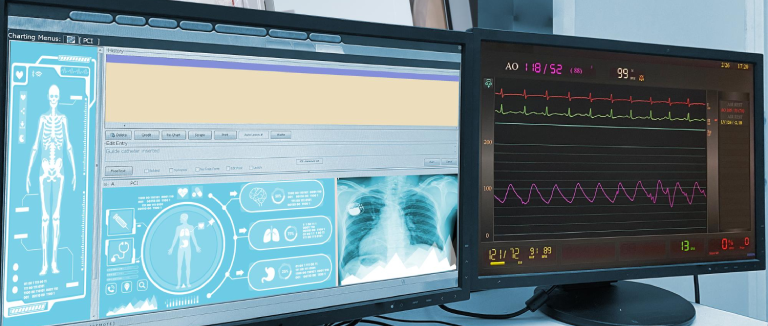Understanding Virtual Angiography and Its Role in Heart Health
Heart health is one of the most important aspects of overall well-being. Thanks to rapidly advancing medical technology, diagnosing heart conditions has become faster, safer, and more comfortable than ever before. One remarkable innovation in this field is Virtual Angiography. This advanced imaging technique comes highly recommended by Liv Hospital, where state-of-the-art technology meets expert medical care. In this comprehensive guide, we'll explain what Virtual Angiography is, how it works, who may benefit from it, and why Liv Hospital excels in providing this innovative service.

What is Virtual Angiography?
Virtual Angiography is a non-invasive medical imaging technique used to visualize the coronary arteries and assess for any blockages, narrowing, or abnormalities. Unlike conventional angiography, which involves threading a catheter through a blood vessel into the heart, Virtual Angiography employs a high-resolution computed tomography (CT) scanner along with a contrast dye injected into the patient's bloodstream. This combination enables doctors to create highly detailed, three-dimensional images of the coronary arteries without the need for invasive intervention.
Virtual Angiography vs. Conventional Angiography
There are several key differences between Virtual and Conventional Angiography, each offering distinct advantages depending on the patient's condition. Traditional angiography requires inserting a catheter into the groin or wrist artery, navigating it into the coronary arteries, and injecting contrast dye directly into the heart's vessels. This method, while highly effective for high-risk cases, is invasive, requires local anesthesia, and may involve overnight hospital observation.
In contrast, Virtual Angiography is completely non-invasive. It requires only a simple intravenous contrast injection in the arm and no catheter insertion. Patients lie comfortably on a CT scanner bed while the machine takes rapid images of the heart. This method is faster, involves less radiation exposure, and requires no recovery time, making it an ideal diagnostic tool for low to moderate-risk patients.
How Virtual Angiography is Performed
At Liv Hospital, the Virtual Angiography process is designed to ensure maximum patient comfort and accuracy. The procedure begins with a few simple preparations”patients are typically asked to fast for 4 to 6 hours before the scan and to avoid stimulants such as caffeine. If you have any allergies to iodine-based contrast dye, be sure to inform the medical team in advance.
During the procedure, the patient lies flat on the CT scanner table while a nurse inserts an intravenous (IV) line into the arm to administer the contrast dye. As the contrast travels through the coronary arteries, the CT scanner rapidly captures hundreds of cross-sectional images. These images are then reconstructed into a detailed 3D map of the heart's blood vessels. The entire imaging process takes about 5 to 10 minutes, and most patients can return to their normal activities immediately afterward.
Who Can Benefit from Virtual Angiography?
Virtual Angiography is particularly beneficial for specific groups of patients. Individuals with a family history of heart disease”even if they do not currently exhibit symptoms”may benefit from a proactive assessment of their heart health. Likewise, people experiencing chest pain, shortness of breath, or unexplained fatigue might consider Virtual Angiography to help detect underlying coronary artery disease.
This technique is also an excellent option for patients concerned about the risks associated with invasive procedures. It provides an alternative diagnostic pathway for individuals with chronic conditions such as diabetes or hypertension, who may require regular monitoring of their heart health. Additionally, patients seeking a second opinion before undergoing an invasive procedure can gain valuable insights from Virtual Angiography.
Advantages and Disadvantages of Virtual Angiography
Virtual Angiography has several advantages, particularly in terms of patient comfort and convenience. It's painless, non-invasive, and does not require sedation. The procedure is fast, with imaging completed within half an hour and results typically available within 24 hours at Liv Hospital. The detailed 3D visualization provided by Virtual Angiography gives cardiologists an exceptional tool to evaluate heart health.
However, there are some limitations. Virtual Angiography may not be suitable for high-risk patients experiencing acute symptoms, such as a suspected heart attack, where conventional catheter angiography might offer more immediate intervention options. Additionally, individuals with severe kidney disease or contrast dye allergies need special consideration before undergoing the procedure. Despite these limitations, for routine diagnostic purposes, Virtual Angiography offers significant benefits.

How Results Are Evaluated?
Once the imaging is complete, expert radiologists and cardiologists at Liv Hospital carefully analyze the results. The images reveal narrowing or blockages in the coronary arteries, as well as calcium build-up that could indicate developing heart disease. In addition to the angiography images, patients may receive a calcium score, which quantifies the level of plaque build-up in the arteries.
Based on these findings, the Liv Hospital cardiology team develops a personalized treatment plan. This might involve lifestyle changes, medications, or”if necessary”further procedures such as conventional angiography or stent placement. The ability to create an early intervention strategy before symptoms worsen is one of Virtual Angiography's greatest strengths.
Is Virtual Angiography Safe?
At Liv Hospital, patient safety is the top priority. Virtual Angiography uses low-dose radiation protocols to minimize exposure while maintaining image quality. The contrast dye used is generally safe, although patients with known iodine allergies or compromised kidney function should discuss their risks with the medical team in advance.
For pregnant women, Virtual Angiography is usually avoided unless absolutely necessary, as all medical imaging involving radiation carries a theoretical risk to the developing fetus. In children, the procedure can be performed with modified radiation doses tailored to their smaller size and unique needs.
Essential Considerations Before Having Virtual Angiography
If you are considering Virtual Angiography, it's essential to follow some simple guidelines to ensure accurate and safe results. First, discuss your full medical history with your cardiologist at Liv Hospital, including any previous allergic reactions to contrast dye, kidney problems, or existing heart conditions. Follow all fasting and medication guidelines provided before the procedure.
After the scan, drink plenty of fluids to help flush the contrast dye from your system. While most patients experience no side effects, mild reactions like a metallic taste or a warm sensation during contrast injection are common and harmless. With these simple precautions, you can ensure a smooth and stress-free experience.
* The Liv Hospital Editorial Board contributed to the publication of this content.The contents of this page are for informational purposes only. Please consult your doctor for diagnosis and treatment. This page does not include information regarding medicinal health care services at Liv Hospital.
For more information about our academic and training initiatives, visit Liv Hospital Academy
Frequently Asked Questions
What is Virtual Angiography?
It is a non invasive CT based imaging method that visualizes the coronary arteries using contrast dye to detect blockages or narrowing.
How is Virtual Angiography different from conventional angiography?
Virtual Angiography uses a CT scanner and IV contrast, while conventional angiography requires a catheter inserted into an artery.
Is Virtual Angiography painful?
No, it is completely non invasive and painless. Only a simple IV line is required.
How long does the procedure take?
The scan itself takes about five to ten minutes, and the entire visit is usually completed within thirty minutes.
Who should consider Virtual Angiography?
It is ideal for low to moderate risk patients with chest pain, shortness of breath, family history of heart disease, or for those seeking a non invasive evaluation.
Is Virtual Angiography safe?
Yes. It uses low dose radiation and a standard contrast dye. Patients with kidney disease or iodine allergy should consult their physician.
Can Virtual Angiography detect early heart disease?
Yes. It can identify plaque build up, vessel narrowing, and provide a calcium score to assess future risk.
Do I need to prepare before the procedure?
You may need to fast for four to six hours and avoid stimulants like caffeine as instructed by your physician.
What happens after the scan?
Most patients return to normal activities immediately. Drinking fluids helps flush the contrast from the body.
Will I need further tests after Virtual Angiography?
If significant narrowing or blockage is detected, your cardiologist may recommend medications, lifestyle changes, or conventional angiography for treatment planning.


